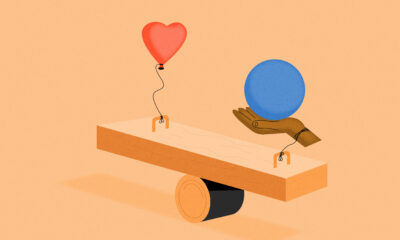Features
How To Prepare For Eid al-Adha
It’s essential to understand the significance of Eid and engage in acts of worship to deepen your spiritual connection with Allah.

On the 16th of June this year, Muslims around the world will troop, en masse, to the prayer ground to observe a compulsory two-rakah prayer – the major act of Eid al-Adha. Eid al-Adha, also known as the Festival of Sacrifice, is an important Islamic festive season that commemorates the willingness of Prophet Ibrahim to sacrifice his son as an act of obedience to God. It also marks the end of the annual Hajj pilgrimage in Saudi Arabia. Preparing for Eid al-Adha involves several religious and social practices.
Fasting on Arafah
Eid al-Adha begins before the actual day when people march to the prayer ground. It is recommended to fast on the Day of Arafah (the day before Eid al-Adha) if you are not on pilgrimage. It is a day that holds great significance and blessing and every Muslim, who is not chanced to perform Hajj, is admonished to observe the Arafah fast.
Practical Preparations
On the day of Eid, one of the most important rituals is to dress your best. If you have an extraordinary dress that is locked far away in your wardrobe, Eid is your best chance to wear it. Many people also buy new clothes to express their joy and give thanks to the Almighty for sparing their lives through the year. If you can, decorate your home to create a festive atmosphere. This can include lights, banners, and other decorations.
One of the things that makes Eid al-Adha an exciting celebration is that it involves the sharing of meat. Those who are fortunate enough to purchase an animal – although rams are preferred, cows, camels, or goats are also accepted – are expected to slaughter it after the prayer and following the Imam of your congregation’s slaughter. The meat from the animal is then shared according to tradition, with one-third for the family, one-third for relatives and friends, and one-third for the needy and those who could not afford to purchase an animal. This tradition aims to ensure that everyone can partake in the celebration and that no one feels left out.
Once you have your clothes and animal checked, the next thing is the spiritual aspect of the day.
Spiritual Preparations
While Eid is a festive season and everyone is expected to be joyous mood, it is equally a religious act of worship. As everyone, male and female, marches onto the prayer ground, they are expected to make supplications, takbeer, and share greetings with everyone they meet on the road. As you say “Eid Mubarak”, they respond, “TaqobaLlahu minna wa minkum”. It translates that you wish them a prosperous celebration and the response is for, God to accept it as an act of worship from everyone. The recitation of the takbeer, which is a declaration of faith, starts from the evening of Arafah until the last days of Tashreeq (the three days after Eid). The takbeer is commonly said after each of the five obligatory prayers.
Eid al-Adha involves both religious and practical preparations to ensure everyone has a memorable festive celebration. Religiously, it’s essential to understand the significance of Eid and engage in acts of worship to deepen your spiritual connection with Allah. But it is also important to have fun as Eid is an opportunity for family, friends and loved ones to come together.
I wish every Muslim ‘Eid Mubarak.
***
Featured Image by Rayn L for Pexels





















